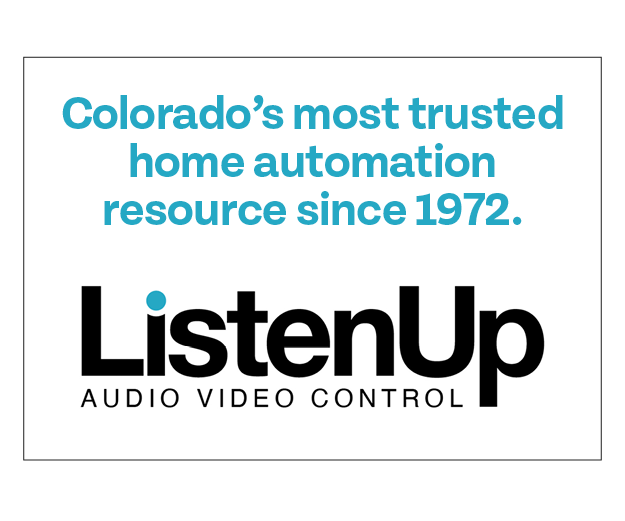The Denver metro area saw record home prices this summer, and closings in September were up an average 30% over September 2019, according to the Colorado Association of Realtors. In today’s homebuying markets, home shoppers haven’t been exactly discerning, according to Paul Kriescher, vice president at PCD Engineering.
A public health crisis and widespread fires underline the importance of indoor air quality. Owners and their families have had to spend more time in their homes this year than they likely ever anticipated. However, in an aggressive real estate market, builders whose value propositions include the kinds of high-performance homes that would typically come with a premium price may wonder if they need to reassess their offerings.
RELATED: 3 Key Factors for Energy Efficient Homes
“It’s still hard in this marketplace [when] someone’s like, ‘I’ll buy that because it’s got a closet,’” Kriescher said. However, “the people who are taking a few breaths in between making decisions on buying a house value these things.”
He added, “Builders who are marketing that are definitely having positive feedback. It may not be the difference for them in getting someone to buy a home, but the builders I work with tell me they sleep better.”
Breathing easier
The key to indoor air quality, according to Kriescher, is “a very low air-leakage home so you can have control over where [air is] coming from, and then step forward into doing energy recovery ventilation, or heat recovery ventilation.”
Some builders are taking extra steps and adding things like UV air purifiers, he said, but that’s a “belt and suspenders” solution for clients with respiratory issues. For most other clients, HEPA filtration or minimum efficiency reporting value (MERV) filtration will be sufficient to meet clients’ needs regarding indoor air quality.
“The standard actually has been a little bit fudged in the manufacturing of some of the [HEPA] filters,” Kriescher said. “We’ve been encouraging more of a focus on high-level MERV filtration, but really doing good-quality air exchange from a known source because too much of the building code is still trying to help make it affordable.”
The problem for owners is when air exchange isn’t coming from a known source.
“If you’re sucking out air just with an exhaust fan, let’s say in a bathroom on a timer, which is a common practice for a lot of residential and multifamily projects, you don’t know where that air is coming from,” Kriescher explained. In a multifamily building, air may be drawn from a neighbor’s unit — perhaps someone who’s quarantining with COVID-19. For single-family homeowners, exchanges often occur between the home and the garage.
“What does the family store in the garage? They may have some gasoline cans or paint cans that aren’t fully sealed or things like that, and then you’re introducing that into the home,” Kriescher said.
“Commercial buildings have had to do this for forever,” he pointed out. “That’s been migrating into the residential area more, with COVID pushing the accelerator a little bit.”
Code comfort
The experiences of this year have also put a spotlight on homeowner comfort.
“With so many people working from home, schooling from home, just spending a lot more time at home, having a space that’s incredibly comfortable” is a bigger priority for homeowners, Kriescher said, especially those who have noticed where their homes are lacking in that regard.
“The beautiful thing that’s always been there with energy efficiency … is that [when] you make it more energy efficient, it gets more comfortable,” he said.
Building to meet the 2018 code at a minimum is a good starting point, Kriescher said, but builders who “are trying to optimize comfort are doing more than that, and trying to get to higher R values like an R-25 wall system, R-40 to R-50 ceilings and insulating basements. A few of them are insulating underneath the basement slabs.”
Sub-basement insulation is a passive house principle, and may be overkill for some owners, but Kriescher argued that as the “cutting edge of certifications,” passive house sets a bar for builders to aspire to.
“The standards are simple — air tightness, BTUs per square foot, basically — but they’re really aggressive,” he said. “All industries, especially the building industry, need something like that as the cutting edge, because people need to know where’s the edge of the cliff?”
Energy Star certifications are easy for builders to obtain, “and yet many builders have moved away from it in recent years because code has been stepping up,” Kriescher said. However, consumers value certifications because they show their new home has undergone some third-party testing that proves the claims made regarding efficiency hold up.
“Some builders argue that building departments take care of that, and some building departments do a very good job. Other building departments are less concerned about how well this works because they don’t see it directly as a life safety issue,” Kriescher said.
With a third party stepping in, consumers can trust there’s some consistency between how their new home will perform compared to their neighbors’ homes. It gives them “the benefit of the doubt that if you hold this home for 30 years, it’s not going to break your piggy bank,” according to Kriescher. They have reassurance that the home was built in such a way that they don’t have to worry that just five years down the road, they’ll need to make significant upgrades to maintain their home’s energy efficiency.
Final costs
As building codes advance to make code-minimum homes more efficient, and the costs of construction materials in general increase, the premium to build a green home shrinks. Kriescher argues that building to meet Energy Star standards will add between 1% and 2% to the cost of the home.
Depending on what is required by a jurisdiction’s building department, the added costs could be at the lower end of that range. For example, blower door tests have been required since the 2012 code, but some home rule cities haven’t enforced that provision, Kriescher said. In areas where those tests are required, building above code will add “definitely less than 1%.”
“Builders who are being thoughtful, thinking about sustainability, thinking about the comfort, thinking about the indoor air quality, are builders who are going to last the test of time,” Kriescher said. Millennials in particular expect these features in their homes, “even in a tight market, and they are now finally starting to come into a place where they’re looking at buying homes.”
The pressures on today’s housing market won’t last forever, and when the market slows, Kreischer said, builders who have been building high-performance homes will be able to keep their prices higher.
“I’d say you’re foolish to not be looking into this,” he added. “If you only build to code, it’s going to bite you, where you’re not going to be able to compete when the market slows down.”
Millennial homebuyers want green results
Millennials, the oldest of whom are in their late 30s, account for 38% of homebuyers, according to the National Association of Realtors’ 2020 homebuyers profile. While 10% of all buyers cited green features and energy efficiency as a reason for buying a new home, as opposed to an existing home, that share increased to 29% of millennials.
Millennial homebuyers are concerned about the environment, but few of them put their money where their mouths are. The National Association of Home Builders found that 83% of homebuyers are concerned about the impact of their home on the environment, but only 16% are willing to pay more for a green home.








